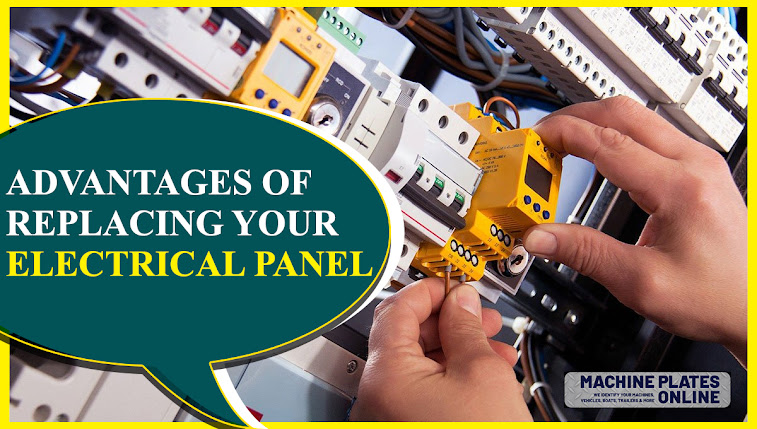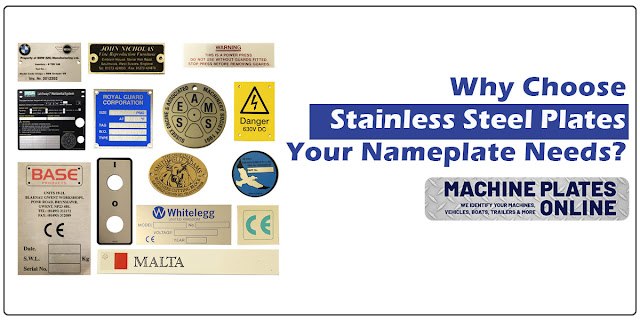How to Choose Adhesives for Nameplates, Labels & Tags
It is not new to realize that how important these nameplates, tags, labels, and logos are for a company. They symbolize the value of the brand and in many cases pass on vital information to the end customer. Labeling of the manufactured products and equipment is part of the manufacturing process. All the details about the products with the company logo have to be presented in the most attractive format which the end customer doesn’t miss reading. The company has to assure that the right adhesives are used for all these labels and nameplates, to ensure that it doesn’t fall out in any condition and hold on to it without any issue. The best adhesives are used in the case of self adhesive engraved nameplates because they are expected to hold on even at the toughest surfaces. But there remain a lot of things that should be noticed and considered to make sure that your adhesive works properly and hold on to the surface.
ALSO READ FOR How Do Locker Number Plates and Name Tags Work?
So let’s go through all the factors one by one which affect the adhesive and let’s see the solutions to avoid them.
Surface Condition
It is very important to determine
the surface of both the nameplate and the surface where it needs to be stuck. A
lot of things like the material used to make the nameplate, its size,
flexibility needs to be determined and it should be ascertained if any
treatment is required on the surface where the nameplate be fixed.
·
Material
A lot
of different adhesives are used in the US market and almost all are known to
easily attach to the metals. If the labeling or plate consists of plastic, it
might require plasticizer-resistant adhesive to make sure that the bond does
not soften or loosen. Self-adhesive engraved
phenolic labels are widely used and use the
best material for the perfect solution.
·
Texture
It is
one of the most essential things to recognize because the texture will
eventually determine what kind of adhesive will be required for the perfect
bond. The most important case is the one when you have to put a label or
nameplate on an uneven or irregular surface. This surface will require a form
adhesive which will play a crucial role in filling the gaps in the surface and
creating a long-lasting bond. Smooth surfaces in comparison have a variety of
options to choose from.
·
Treatment
Metals
are always mentioned as a very easy alternate to put any kind of nameplate or
label. But there is an exceptional case where a metal with a powder coat can
become a difficult choice for display. It won’t be easy to get it attached to a
surface most of the time. So this case requires a very special type of adhesive
which is prominently known as 3M 300LSE Series and is highly available in the
US market.
·
Size
Size
can often be a decisive factor while deciding the kind of adhesive to be used
for durable bonding of the plate. It is no surprise to understand this basic
fact that a large size plate will require a much stronger adhesive for the best
outcomes. The bond needs to be very strong in the case of larger plates while
in comparison a small tag of plastic might work even with a mediocre adhesive.
·
Cleanliness
No
matter what texture the plate is and what kind of adhesive is being used. If
the surface where you need to put the plate is not clean or has a wet patch,
the nameplate in this case is bound to come off, no matter how strong the
adhesive was. One should ensure that the dirt is properly cleaned, and the
surface is free of grease or oil. There are always specific guidelines being
quoted with your adhesive which state what all precautions one needs to consider
before using it on a surface, these guidelines should be strictly followed. We
at machine plates online also use nameplates of phenolic engraving which
make them electricity safe. They act as wonderful electrical insulators and are
very popular.
·
Surface
energy
A very
important factor to consider is surface energy. it helps in defining the bond
of strength between the two of those materials. If the surface energy is
strong, the bond will be stronger. Some
of the metals and plastic namely polyester, acrylic, or polycarbonate are all
high in surface energies and thus form a very strong bond. If the nameplate is
made up of low surface energy material then a special kind of adhesives are
present in the market which is specially used on these low surface energy
materials giving them ultimate strength.
Application Orientation
How the
plate or label has been oriented also plays an important role in deciding the
future of how long it stays. If your adhesive-laden nameplate is placed on a
horizontal surface i.e. on an electrical box, the weight of your nameplate
won’t be the decisive factor for the strong bond. But if the nameplate is hung
on a vertical surface, there will be a factor of gravity and the weight of the
nameplate could be the deciding factor about the bondage. Thus a much stronger
adhesive would be required in the latter scenario.
Environmental
and Use
Where
the nameplate has to be stationed will play a major role in deciding its fate.
A stronger adhesive would be required if the nameplate Is placed out in open
and face regular heat or water. In the case of water, many water-resistant
adhesives are easily available in the market. if the nameplate continues to
move due to the constant wind it will again require a much stronger adhesive.
If the nameplate is placed in a region with a constant human touch, it will
again require a good adhesive to create a much stronger bondage
Exposure
to the Elements
Apart
from the environment, there are many other exposures with cause a potential
risk and limit the strong bondage. Things like exposure to some kind of
chemical, ultraviolet rays, and extreme temperatures also require a very
specific type of adhesives that has the resistant power to fight these risks
efficiently. We at machine plates online have the best quality self adhesive
engraved name plates which will act as your best
solution against any extreme exposures.
ALSO READ FOR




Comments
Post a Comment